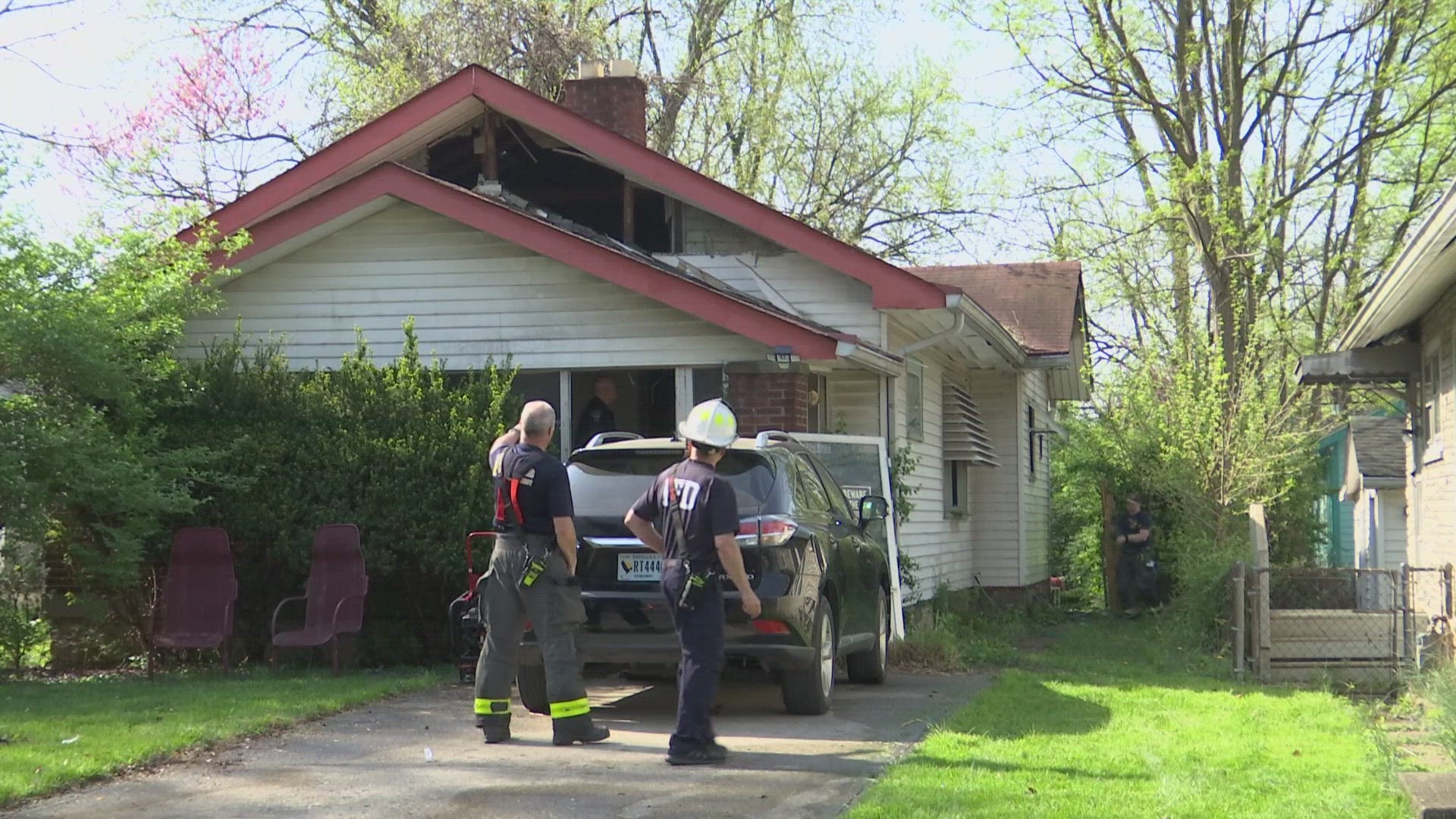Bob Segall/13 Investigates
13 Investigates will change the way you look at smoke detectors. Even though they may look the same, the truth is not all smoke detectors are alike.
Unfortunately most people don't know that, and chances are the smoke detectors in your home right now will not provide you and your family with the best protection available. By not knowing the difference, you and your family could face a "Deadly Delay" and not escape in time.
Fires are terrifying to even think about and they happen far too often. Fire burns 400,000 homes in the U.S. every year, and those fires kill 3,000 people.
It's why you make a conscious choice to protect your family with a smoke detector. But when it comes to those smoke detectors, there's something most families don't know and some never find out until it's too late.
Smoke detector never sounded
Sheila Hackert lives with that awful truth. "I just trusted it would work. I had no idea it wouldn't work. It's just horrifying. It surprises me that more people don't know."
She lost two loved ones, her husband Bill and daughter Christine. Hackert vividly remembers the fire that destroyed her life and New York home at four o'clock in the morning. "The room was filled with thick black smoke. It's horrifying to be in a fire."
Hackert's son John escaped by jumping out a second floor window. She was able to crawl out the kitchen door after the family dog woke her up. "I'm only alive because of a puppy," she said.
What makes Hackert so angry is she says the smoke detector right outside her bedroom never went off even though the house was full of smoke and fire.
Fire investigators closely examined Hackert's smoke detector after the fire and found it had a working battery. So why didn't it work?
Jim Hacker, the family attorney for the Hackerts, says it's because of how that smoke detector was designed. "The public has to know that there are two different types of smoke detectors."
Ionization smoke detectors: Limitations
The smoke detector Hackert had in her home is the same type of smoke detector you probably have in your home. It's called an ionization smoke detector which works best in detecting fires with lots of flames.
The problem is thousands of fires begin as slow burning, smoldering fires that can fill a home with deadly smoke long before it fully ignites.
That was the scenario in the deadly Hackert fire. An overloaded extension cord triggered a slow-burning fire that smoldered throughout the night.
According to some Indiana firefighters, smoldering fires are the most dangerous. IFD Safety Officer Jack Cassaday told 13 Investigates Bob Segall the dangers: "The smoldering fire is going to burn up all the oxygen and it's going to kill everyone in their sleep."
Photoelectric smoke alarms: A better chance
During our three-month investigation we learned the different types of smoke detectors. What you need to know is there is another type of smoke detector called a photoelectric smoke alarm. It looks the same it but this device is better at detecting slow-burning smoldering fires. Photoelectric alarms cost less than $20 and the technology has been around for almost thirty years. If you've never heard of a photoelectric smoke detector, you're not alone.
Why are photoelectric smoke detectors such a secret? Because the overwhelming majority of smoke detectors made and sold are ionization detectors. Remember, that type of alarm is not as quick to recognize slow-burning fires which account for a large percentage of fire deaths.
Attorney Jim Hacker explains why he considers ionization to be a risk for homeowners. "Not only does it go off, the ionization smoke detector goes off later in these types of fires. Sometimes it doesn't go off at all."
Fire victim files suit
Kimberly Lee says that is what happened to her.
Lee is still covered with scars from the apartment fire on the Indianapolis east side. Her boyfriend Cornell was severely burned too. After the blaze, both were in a coma for a month and because of medical complications, Cornell later died.
Investigators believe the fire started from cigar ashes that burned for hours inside a couch while both were asleep.
Lee remembers that night. "The smoke was just so bad and it was so hot."
13 Investigates asked her if the smoke detector went off at any point during the fire. Lee said no. When asked how it was possible that Lee's apartment could be filled with smoke and the smoke detector failed to go off, she replied, "I don't know. I don't know. I just trusted that it would work."
Lee says not only did the detector not work, but she says in a lawsuit, the company that made her smoke detector failed to warn her that it might not work properly in a smoldering fire, the kind of fire that destroyed her apartment.
Even today Lee didn't realize a different type of smoke detector might have given her and Cornell the warning they needed. "I thought a smoke detector was a smoke detector."
Unfortunately that's not true and even the manufacturers admit it. In recent years smoke alarm companies have added information to their packaging. It explains there is a difference and that photoelectric technology is faster at detecting slow-smoldering fires. The manufacturers also say the best protection for your family is to have both types of smoke alarms in your home.
This type of information is something Sheila Hackert wishes she had known. "I didn't know there was a difference." She tearfully explains why it's so important for families to understand the differences in smoke detectors. "These things have to work. They have to work. I don't want another family to go through what I went through - go to bed at night and the next night half of your family is gone. I will live with that the rest of my life."
Last year Hackert won a $7 million verdict against BRK, the company the made her First Alert smoke detector. While the case is on appeal, the company says it won't comment but the company did provide WTHR with a statement.
Smoke alarm companies do say their detectors meet strict federal standards and that independent tests show both ionization and photoelectric smoke detectors give consumers adequate time to escape most fires.
Now, how do you tell what you have in your home? Some smoke detectors don't say anything on them. An older smoke detector on your ceiling right now might give you very few clues and in some models, those clues might be on the back or even inside.
What type of smoke detector do you have?
Newer smoke detectors are labeled much better. Here's what to look for: Photoelectric smoke detectors usually have the word PHOTOELECTRIC right on them. You might see a big "P" or a "blue symbol". And if you see the words "dual sensor," that means the smoke detector has both photoelectric and ionization built in.
If you don't see any symbols chances are, it's probably an ionization smoke detector. Those alarms are sometimes marked with a letter I, or other symbols.
When you are taking a look at your smoke detector, please make sure to check the battery. That's crucial.
The bottom line: Smoke detectors do save lives. Adding a photoelectric smoke detector to your home will usually give you more warning in a slow-burning, nighttime fire.
Smoke Detector Reservation - WTHR-TV, hhgregg and First Alert are arranging to ship several thousand dual-sensor (featuring both ionization and photoelectric technology) smoke detectors to Central Indiana. Click the link to reserve yours.



